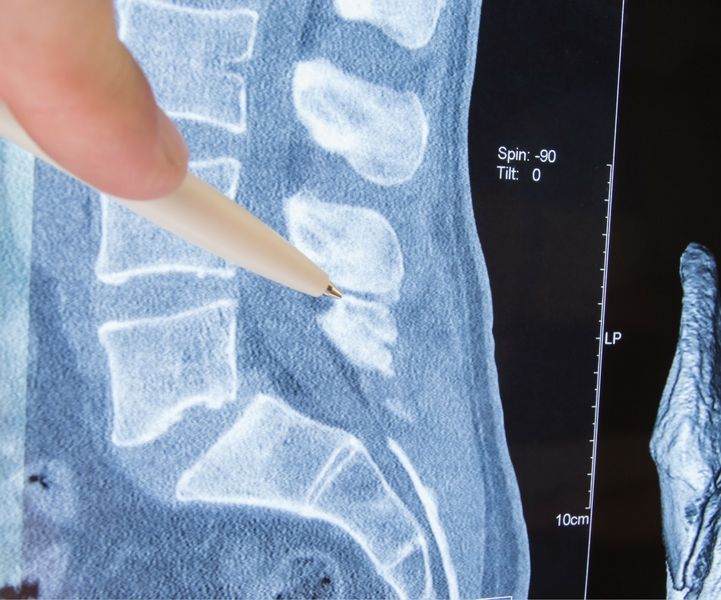Lower Back Exercises & Stretches for a Strong, Pain-Free Back
8 minute read
The numbers of chronic lower back pain had skyrocketed over the last few decades, with an estimated 80% of Americans experiencing some form of back pain. After arthritis, back pain is the next major cause of disability in the United States. Not only does this mean time off work and missed family events but also large medical bills.
It may not seem like good news but the cause of most back pain issues result from mechanical issues rather than from serious illness. This means there are preventative measures you can take to keep your back healthy and to avoid all that unnecessary pain.
Once you confirm diagnosis with your doctor that your back pain is mechanical and not the result of injury or disease, then the right exercises and stretches will return strength to your back.
Brace Yourself
Lower back pain can be caused by a bulging disc or from repetitive movement that causes pinched nerves. Additionally, tight or weak muscles can cause persistent pain, especially larger muscle groups such as the hip flexors.
Some injuries will require a medical professional such as a chiropractor or spinal physician but others related to weakened muscles can be treated at home with exercising and stretches.

The most common back injuries are listed below:
Degenerative disc disease: The spinal discs that act as cushions between the vertebrae naturally degenerate over time. This pain is felt in the cervical spine or lower back and is often related to osteoarthritis or a herniated disc.
Pinched or compressed nerve: When the nerve becomes pinched between ligaments, tendons or bone, you can experience pain. Typically this occurs after repetitive movements or being in a particular position for a long period of time. Treatment can vary from physical therapy to surgery.
| Related: Joint Health Guide: Improve Mobility and Ease Inflammation |
Muscle or ligament strain: This occurs often when muscles are stretched too far and can be caused by lifting a heavy object, extreme physical exertion or overextending your lower back. These actions weaken your back muscles, which creates instability in the spine, causing pain. You usually treat this with anti-inflammatory medications, rest, and light stretching.
Lack of exercise: Our bodies were designed to move and when we don't, our muscles and joints become weak, causing pain to develop over time. In this case, the right exercises and stretching can restore strength to your lower back.
Best Lower Back Exercises
Most exercises, when performed correctly, actually work the back and your core. It is important to perform all movements properly with the correct posture and a tight core. You want to do this not only to get the most effective results but also to prevent injury during your workout.
| Related: Understanding Our Joints, Cartilage, and The Aging Process |
For the fullest and most effective lower back workouts you want to be sure you are targeting the following muscle groups:
♦ Erector spinae
♦ Latissimus dorsi
♦ Hamstrings
♦ Abdominals
♦ Hip flexors
♦ Obliques

Effective Lower Back Exercises To Try
Arch hold: Start on your belly, keeping your legs straight and arms overhead. Lift your legs and chest at the same time to create a banana shape and hold for 30 seconds.
Swimmer kicks: From the arch hold position, make small kicks with your legs and arms. By completing 50 repetitions of this movement you add dynamics to the previous exercise.
Forearm plank: Start in a push-up position and drop down to your forearms. You want to drive your forearms into the floor as you pull your belly button towards your spine. Be sure to engage your legs and squeeze your butt to really work the muscles. Hold for a minute each time with an equal amount of time for rest in between.
Bird dog: From the plank position, keeping your legs and core tight, lift your right arm forward and lift your left foot from the ground. Return to plank position and then lift the alternate arm and leg. Alternate between the two for a minute and then rest.

Best Lower Back Stretches
You need to remember that as important as strength is, without mobility and flexibility your back is still susceptible to injury and pain. Tight muscles shift joint alignment, which can pinch nerves. This is where the right stretching comes in.
With any of the ideal stretches below, try to hold each pose for a minute at least and no more than two. Remember only hold a stretch to the point where you feel it working and never beyond otherwise you risk pulling the muscles.
Seated forward fold: Sit tall with your legs extended out in front of you. Curl your toes towards your shin. Reach your hands up and fold inward towards your legs You should feel the stretch in the back of your legs and lower back.
Cat and cow: Begin on your hands and knees. Arch your back and draw your chin into your chest; the idea is to look like a Halloween cat. Then, slowly draw your belly button in towards the floor, pulling your shoulder blades together and lifting your head. Now, you should look like a cow. Alternate between the two poses, breathing slowly for ten times each.
Seated forward fold: Sit up tall in a comfortable crossed leg position. Reach your arms overhead and bend inward, bringing your hands to the floor in front of you. Hold for a minute. Cross your legs the other way and repeat.
Reclined spiral twist: Lie flat on your back with your legs extended. Bring your right knee to your chest, shift your hips to the right,and let your right knee fall to the left. Allow your body to relax into the twist and extend your right arm to the right. Hold for a minute and then, switch sides.

Stronger Back; Better You
Incorporating the exercises and stretches discussed can help to strengthen your back and core muscles. The benefits of a strong, healthy back extend beyond just reducing potential injury and pain.
1. Improved posture: The muscles that form a column along the spine, known as the erector spinae, help the abdominal muscles, hip flexors, and oblique muscles to hold the body in an upright position. When you exercise to strengthen these muscles, your posture improves, as does your stability.
2. Better balance: Balance is a critical tool for humans. Sports such as gymnastics and CrossFit® demonstrate the advantages of having a strong core. The balance for this comes from having a strong back.
3. More lean muscle: Muscle weighs more than fat. To maintain health muscle requires fuel. So, strength training and muscle building require protein, making it important to combine exercise with nutrition to get the right balance..
4. Less back pain: By incorporating exercise into your life, you can strengthen weak muscles, which not only reduces pain, but improves your overall health.

The Bottom Line
The dynamic engineering of our bodies exists for movement. The interconnected system of bones, ligaments, muscles, and tendons is nothing short of amazing when it comes to efficient movements.
The stronger your back is, the less pain you are likely to suffer as you age, short of serious injuries. Not only is pain reduced, but the stability of your spine, your balance and posture are all improved. Essentially by taking care of your back, it can take care of you.












